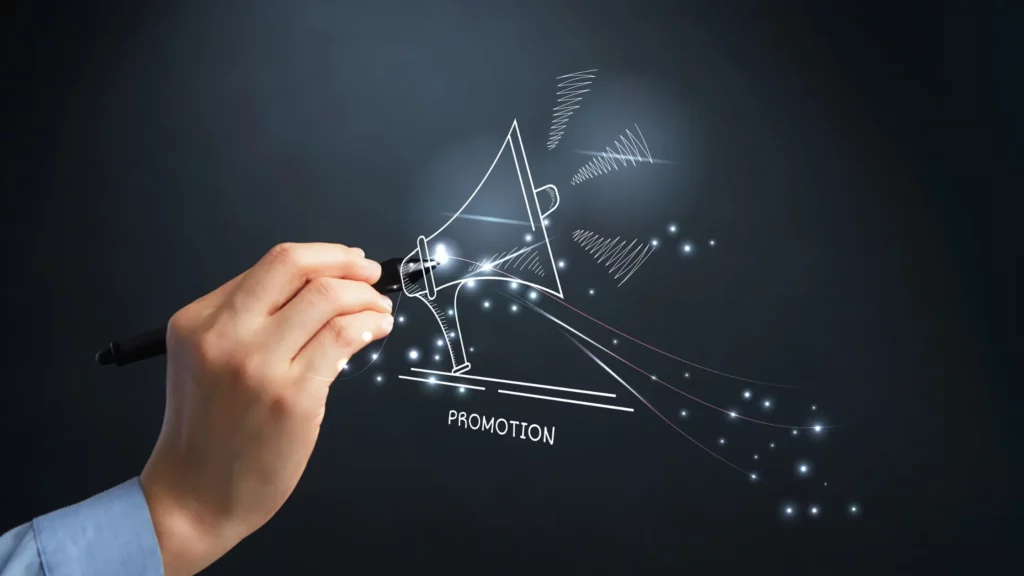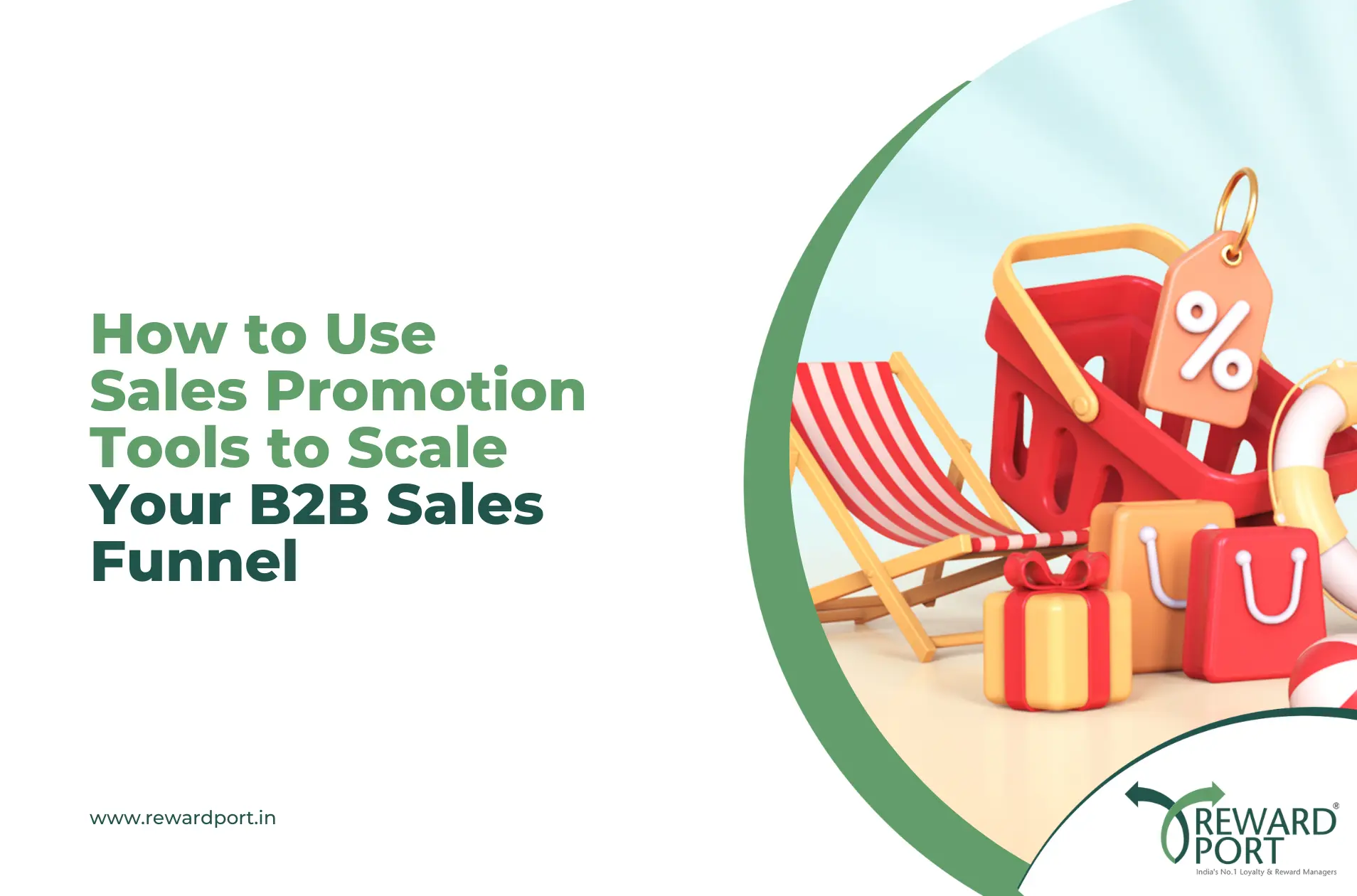
Sales promotion tools can smoothen your marketing efforts by allowing you to market your products or services in a creative way. The B2B market is highly competitive today. To beat such high competition in the market, most businesses are using sales promotion techniques. Sales promotions are the strategies followed by businesses to boost their sales, increase revenue, or achieve other short-term goals. If implemented well, these strategies can take any business to the next level in a very short time period.
If you are facing challenges in generating leads or converting them, you first need to understand the four stages of B2B inbound marketing. Using the right sales promotion tools in each of these stages can help you achieve your business objectives faster. Before that, let us help you understand what sales promotion tools mean and how you can use them to scale your B2B business:
What are Sales Promotion Tools?
Sales Promotion Tools are the resources or methods that businesses use to achieve their short-term sales objectives. These tools help brands in encouraging their customers to buy specific products. The sales promotion tools can be consumer-oriented or trade oriented based on the type of business. Moreover, the objective of sales promotion programs can also be different. Some most significant benefits of sales promotions include an increase in sales, greater brand awareness, better customer engagement, etc.
Many businesses use sales promotions to increase the awareness of their newly launched products or to boost sales for a particular set of products. Some brands use these strategies to clean old stock and make space for new inventory. Whatever the goal is, sales promotion methods work best when you make the use of right sales promotion tools.
Tools for Complete Inbound Funnel Marketing
Inbound marketing is the process where businesses make their potential leads choose them over their competitors. The process consists of four stages, including attract, convert, close, and delight stage. From attracting potential buyers to converting and strengthening relations with them, the inbound marketing funnel covers every single phase. Here is a detailed explanation of all four stages included in the inbound marketing funnel:
1. Attract
‘Attract’ is the first stage of inbound funnel marketing. In this, you need to create engaging content and optimize it to attract your target audience. As a B2B business, your goal might be to attract more dealers, channel partners, or wholesalers. In this phase, you need to majorly focus on increasing brand awareness and finding potential partners who are not familiar with your brand. A great way to identify your target audience is to look at your current customer base and understand patterns among them.
You have to reach out to strangers who can become your potential buyers. After this, you must focus on building interest and excitement among your target audience through social media content, blogs, paid search advertisements, etc. To create engaging content, it is essential to understand buyers’ personas. Understanding buyers’ personas mean finding out their interests, requirements, and behaviors.
In this first stage, you can perform the following activities to attract customers:
- Strengthen the relationships with potential buyers via social media or other channels.
- Use SEO strategies and keyword research to target the right audience.
- Create engaging content to show your target audience that you have the solution to their problems.
Tools You Can Use to ‘Attract’ Your Customers
The following are some great tools that you can use to make the most out of the ‘attract’ stage in your inbound marketing strategy:
1. SEO (Search Engine Optimization)
As the number of internet users is increasing every day, it has become important for businesses to have an online presence. Writing engaging content and publishing it on your website is not enough. You also need to ensure that the content is well-optimized to rank higher on the search engines like Google. If your content is not SEO optimized, it will hardly be visible to your target audience.
2. CRM (Customer Relationship Management)
CRM is the process of managing business relationships and interactions with your existing and potential customers. As per research, over 62% of marketers use some sort of CRM tool to strengthen communication with their potential clients. Zoho CRM, Zendesk, and Hubspot CRM are some most popular tools used for customer relationship management.
2. Convert
The next stage in complete inbound funnel marketing is ‘Convert.’ As suggested by the name, this stage is all about making efforts to convert your visitors into qualified leads. These can be your social media followers, website visitors, blog readers, or any audience that you have access to. Some most common elements that you can use for conversions include case studies, gated content, webinars, ebooks, resource libraries, etc.
Engaging and valuable content is the heart of inbound marketing for B2B businesses. This content should educate your target audience about your brand and the products/services you offer. Make sure that your content is well-researched. Also, avoid writing it in a too promotional tone.
Gated content is one of the powerful tools to convert visitors into leads. This is the content that users can access only after providing their information, such as name, email, mobile number, etc. Gated content doesn’t only help you boost engagement on your website, but also allows you to collect the data of your potential customers. Though these leads have not yet made a purchase on your website, they become a regular visitor of your website once they sign up.
Tools You Can Use To ‘Convert’ Visitors into Potential Leads
The process of conversion is indeed challenging. The following are some best tools for sales promotion that are effective in encouraging your target audience to become your qualified leads:
1. CTA (Call to Action)
As the name suggests, CTA refers to the strategies planned by businesses to encourage their audience to take action. You can add links and buttons to your content that motivate your customers to download a file, fill out a form, or visit a specific page. You can add such links to your landing pages.
2. Lead Capture & Conversion tools
Some popular tools that you can use in this stage include TypeForm, Optinmonster, and Sumo. TypeForm allows you to create surveys without writing any code. Optinmonster is a WordPress plugin for lead generation, which is used by over 1 million websites.
3. Lead Generation Tools
Lead Generation tools like Leadpages, Unbounce, Instapage, etc, can help you find prospects. Leadpages is an online software that allows you to publish landing pages quickly to convert clicks into customers. Unbounce allows businesses to create attention-catching landing pages with minimal effort. The third tool, Instapage, is useful for creating landing pages for your marketing and promotional campaigns.
3. Close
The ‘Close’ stage is the most important and exciting one for businesses as this is where your leads turn into your customers. This is the point where your potential leads trust your brand. They must feel that the products or services you offer are the best potential solutions to their problems. Email marketing is one of the most effective ways to make your leads become your customers. Though this stage is not very easy to deal with, this is where all your hard work or attracting and converting customers might pay off.
Tools You Can Use To ‘Close’ The Deals
The following are some best tools for sales promotion that are effective in helping businesses convert leads:
1. Email Marketing
After collecting the email addresses of your potential customers in the ‘convert’ stage, it becomes easier to directly communicate with them. You can send them emails related to your products, about your new launches, sales, ongoing offers, etc. Sending relevant emails to your customers is the best way to gain their trust. But make sure not to spam their inbox.
2. Marketing automation tools
Marketing automation tools allow you to relax and just observe the processes while they perform their tasks. With these tools, you can reach out to your customers with the most relevant content at the most suitable time. Moreover, these tools score your customers based on their chances of making a purchase. Some popular marketing tools, include Drip, LeadsBridge, and Marketo.
4. Delight
Even after attracting a generating leads and transforming them into customers, your task is not over. You need to make every possible effort in order to make sure that the customers stay loyal. The ‘Delight’ stage is all about building stronger relations with your customers and encouraging them to make repeat purchases. Loyal customers not only purchase more often, but they can also help you generate more leads by recommending your products and services to their friends.
Make sure to engage with your customers on a regular basis via social media or other channels. Your customers must not feel that they are getting valued only until they make a purchase.
Tools You Can Use To ‘Delight’ Your Customers
Converting your leads into customers and thinking that you are done is not a good idea. Retaining your existing customers is much more important than acquiring new ones. The following tools can help you with the same:
1. Social Media Management Tools
Social Media is the best way to stay connected with your customers and engage with them on a regular basis. Some most powerful social media management tools include BuzzSumo, Buffer, and Sprout Social.
2. Loyalty Programs
Running continuous loyalty programs is another great way to keep your customers coming back. By offering them rewards for every purchase, you can make them feel appreciated for their purchase. It helps you boost repeat purchases as well as customer satisfaction.
Create an Effective Sales Promotion Strategy with RewardPort
An effective sales promotion strategy is what aligns with your business goals and takes your customer needs into consideration. RewardPort is one of the top sales promotion solution providers in India. The team of marketing experts at RewardPort can execute the best sales promotion programs for your business, keeping in mind every detail of your business.
Frequently Asked Questions: –
What are the 4 major tools of promotion?
The four most popular tools used in sales promotions are:
- SEO (Search Engine Optimization)
- CRM (Customer Relationship Management)
- CTA (Call to Action)
- Email Marketing
What are the 4 P’s of marketing promotion?
The 4 P’s of a marketing promotion strategy are: Product, Place, Price, and Promotion.
What’s an example of a sales promotion?
An example of a sales promotion strategy is the flash sales or heavy discount offers that brands launch several times. By launching such heavy discounts, brands aim to boost their sales at a particular period or to clear out older stock. There are various other benefits of sales promotions that companies use to achieve different objectives.
Frequently Asked Questions
What are the 4 major tools of promotion?
The four most popular tools used in sales promotions are:
SEO (Search Engine Optimization)
CRM (Customer Relationship Management)
CTA (Call to Action)
Email Marketing
What are the 4 P's of marketing promotion?
The 4 P’s of a marketing promotion strategy are: Product, Place, Price, and Promotion.
What's an example of a sales promotion?
An example of a sales promotion strategy is the flash sales or heavy discount offers that brands launch several times. By launching such heavy discounts, brands aim to boost their sales at a particular period or to clear out older stock. There are various other benefits of sales promotions that companies use to achieve different objectives.


